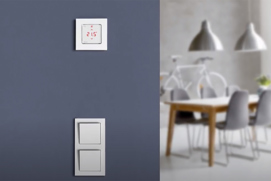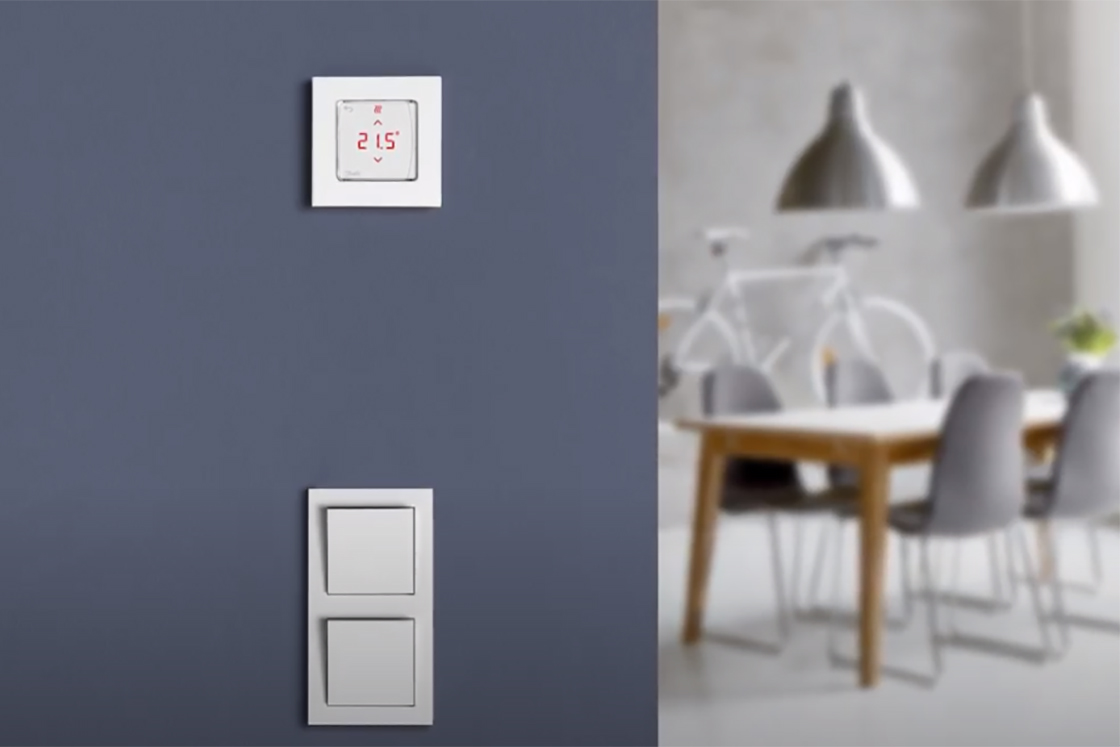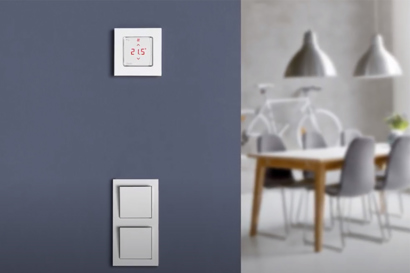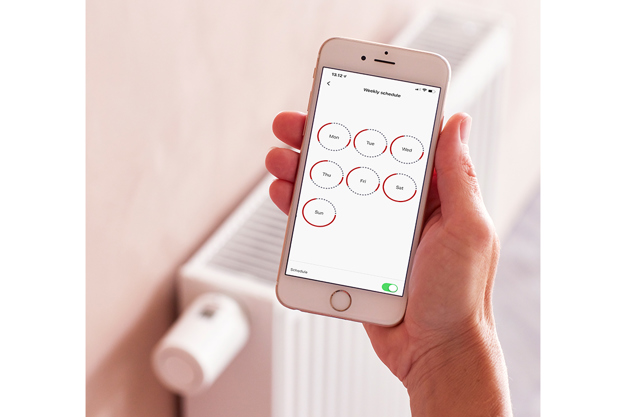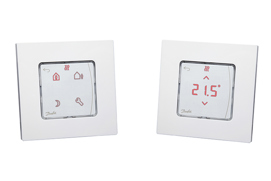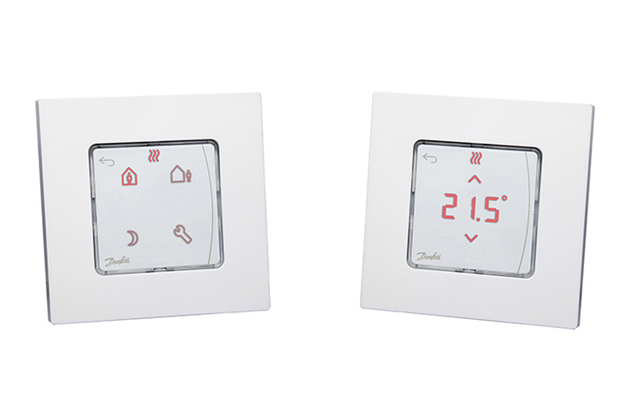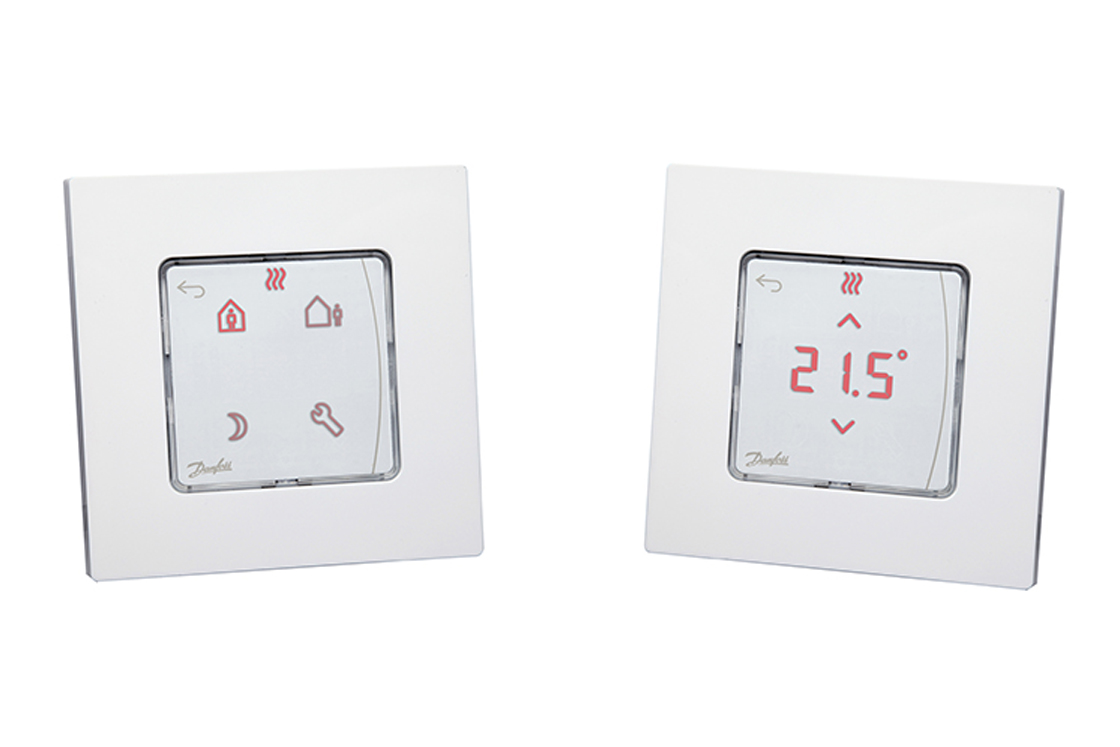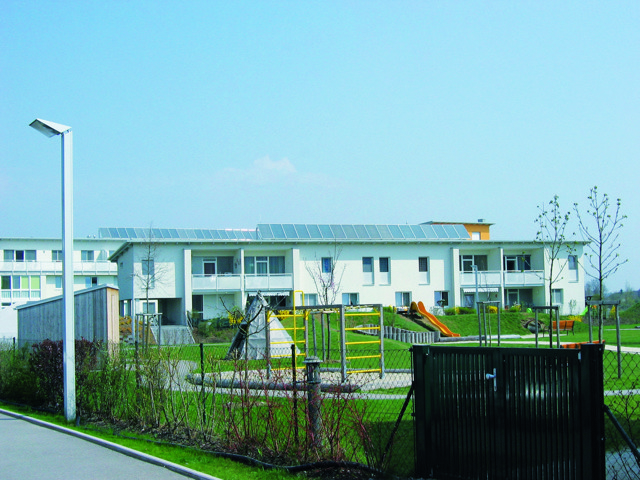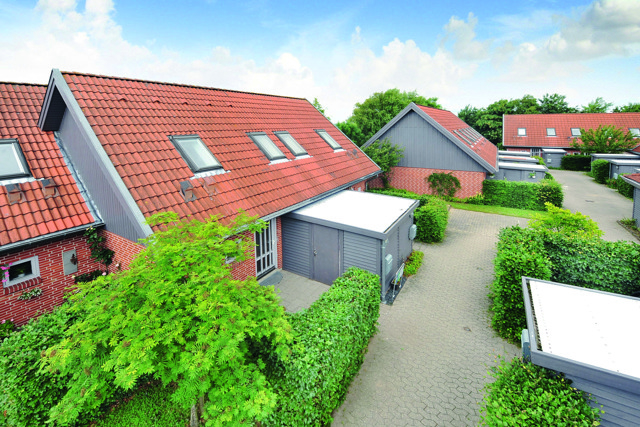What is dynamic hydronic balancing?
In contrast to static balancing, the partial load case is also considered in the dynamic balancing variant. Using dynamic balancing valves or pressure independent thermostatic valves, the differential pressure on the radiator or in the line can be kept constant throughout the building under all load conditions with this balancing solution. The mass flows are correctly maintained even under partial load or changing load conditions – hence the name dynamic balancing.
Related products
-
if (isSmallPicture) {


 Danfoss Icon™ für Fußbodenheizung
Danfoss Icon™ für FußbodenheizungErweiterte Fußbodenheizungssteuerung, passend zu Ihren Schalterrahmen
Eine Reihe von Raumthermostaten und Zonenreglern für die Fußbodenheizung und andere Anwendungen mit Aktuatoren. Entworfen wie ein Lichtschalter, um den Innenraum zu ergänzen -
if (isSmallPicture) {


 Smart Heating
Smart HeatingDanfoss Smart Heating Produkte passen die Temperaturen von Radiatoren-, Elektro- und Warmwasserfußboden-Heizungen exakt an individuelle Tagesabläufe an. Dabei lassen sie sich über eine App jederzeit und von überall per Smartphone steuern und überwachen.
Danfoss Smart Heating bietet eine Lösung für jedes Haus und jeden Bedarf, vom eigenständigen Smart Radiator-Thermostat bis hin zu kompletten Smart Heating-Lösungen für die vollständige Kontrolle - jederzeit und überall.
-
if (isSmallPicture) {


 Danfoss Icon2™
Danfoss Icon2™Fortschrittliche Fußbodenheizungsregelung für hydraulische Fußbodenheizungen, konzipiert für eine schnelle Installation und als Ergänzung des Innenraums. Alle Fußbodenheizungsprodukte können mit allen neuen Funktionen, die eine moderne Fußbodenheizungsregelung bieten kann, auf Danfoss Icon2™ umgestellt werden.
-
if (isSmallPicture) {


 Danfoss Icon™ Support
Danfoss Icon™ SupportKlicken Sie hier, um Dokumentation, Softwareinformationen, Installationsvideos und Anleitungen zu finden.


